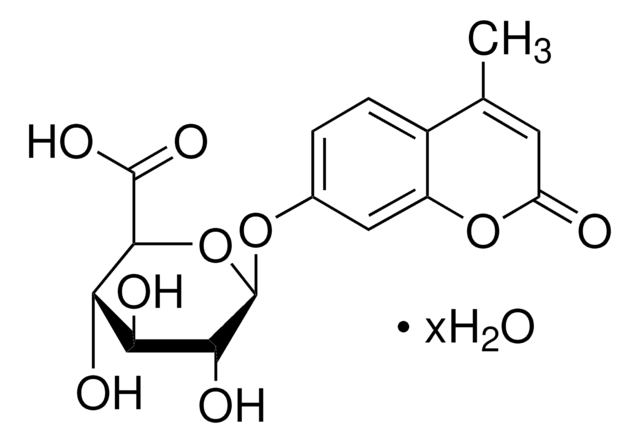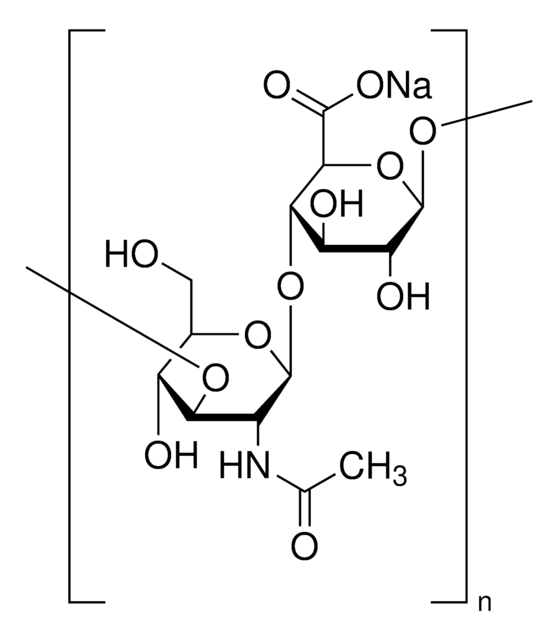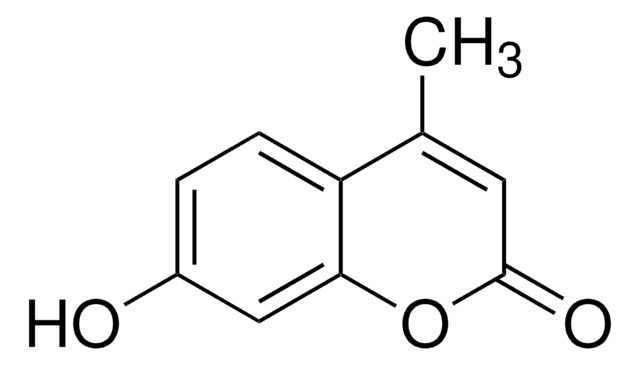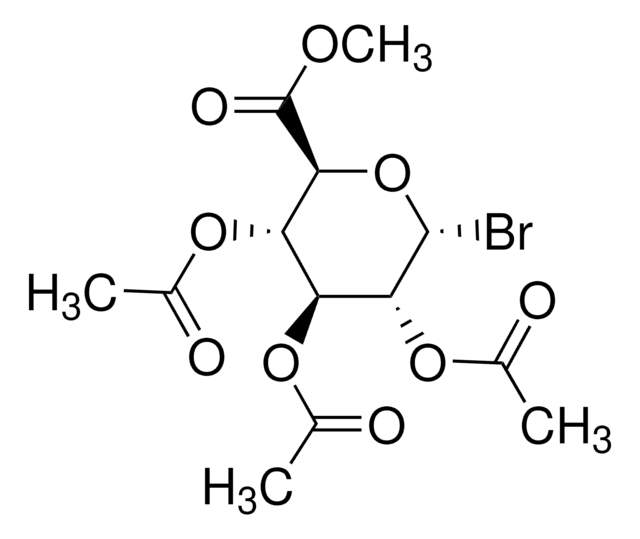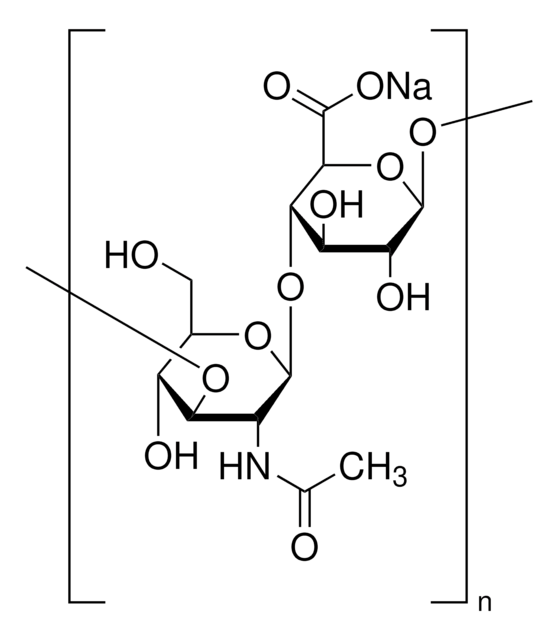M1156
Methyl β-D-glucuronide sodium salt
≥98% (TLC, anhydrous)
Sign Into View Organizational & Contract Pricing
All Photos(2)
About This Item
Linear Formula:
C7H11O7Na
CAS Number:
Molecular Weight:
230.15
UNSPSC Code:
12352201
NACRES:
NA.25
Recommended Products
Quality Level
Assay
≥98% (TLC, anhydrous)
form
powder
optical activity
[α]25/D -61.0 to -59.0 °, c = 1% (w/v) in water
technique(s)
thin layer chromatography (TLC): suitable
impurities
≤2% water (Karl Fischer)
color
white to off-white
solubility
water: 50 mg/mL, clear, colorless to faintly yellow
cation traces
Na: 7.5-12.5%
InChI
1S/C7H12O7.Na/c1-13-7-4(10)2(8)3(9)5(14-7)6(11)12;/h2-5,7-10H,1H3,(H,11,12);/q;+1/p-1/t2-,3-,4+,5-,7+;/m0./s1
InChI key
MSQCUKVSFZTPPA-UDGZVUODSA-M
General description
Methyl β-D-glucuronide induces the production of the enzyme β-D-glucuronidase (GUS) in Escherichia coli.
Application
Methyl β-D-glucuronide sodium salt has been used to induce the production of Escherichia coli β-D-glucuronidase.
Other Notes
To gain a comprehensive understanding of our extensive range of Monosaccharides for your research, we encourage you to visit our Carbohydrates Category page.
Storage Class Code
11 - Combustible Solids
WGK
WGK 3
Flash Point(F)
Not applicable
Flash Point(C)
Not applicable
Personal Protective Equipment
dust mask type N95 (US), Eyeshields, Gloves
Choose from one of the most recent versions:
Already Own This Product?
Find documentation for the products that you have recently purchased in the Document Library.
Customers Also Viewed
Fast detection and quantification of Escherichia coli using the base principle of the microbial fuel cell
Taegyu Kim and Jong_In Han
Journal of Environmental Management (2013)
8-hydroxyquinoline-glucuronide Sodium Salt Used as Electroactive Substrate for a Sensitive Voltammetric Detection of Escherichia Coli in Water Samples?
Jorg Ettenauer
Procedia Engineering, 143-146 (2016)
Journal of Bacteriology, 149 null
Our team of scientists has experience in all areas of research including Life Science, Material Science, Chemical Synthesis, Chromatography, Analytical and many others.
Contact Technical Service